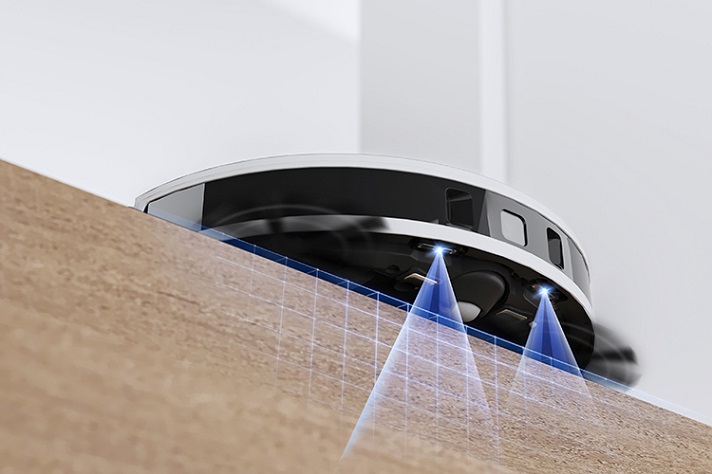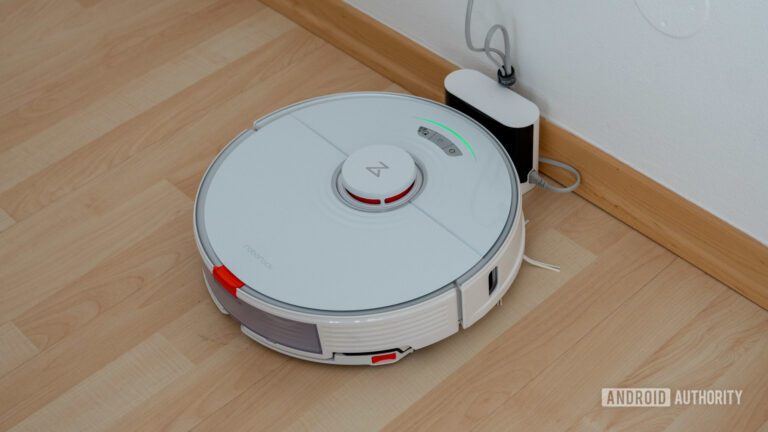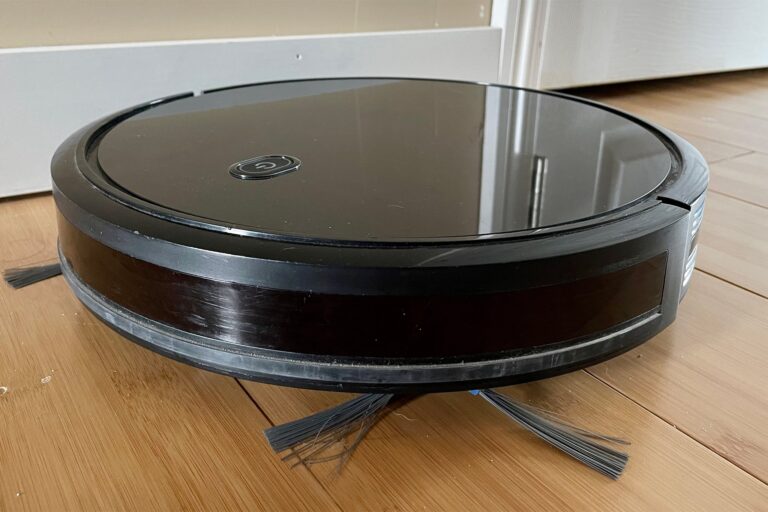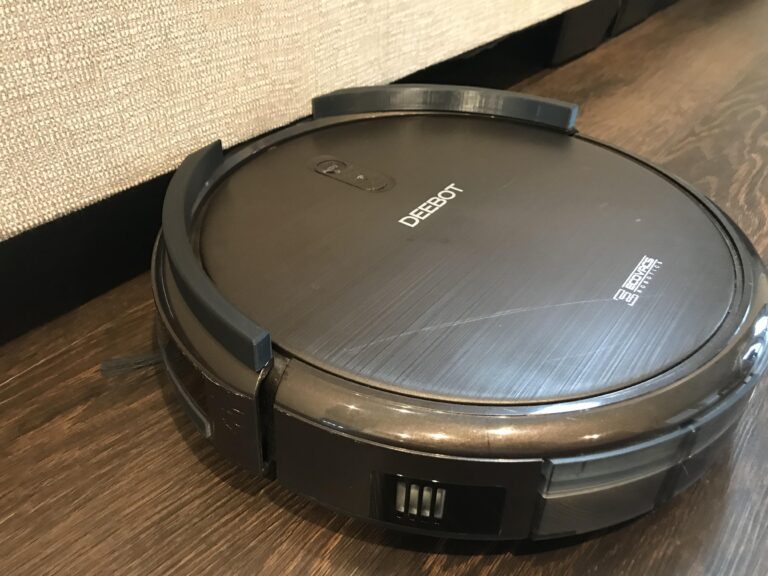How to Use Robot Vacuum on Multiple Floors?

To use a robot vacuum on multiple floors, first ensure it is designed for multi-floor cleaning. Then, program the vacuum to clean each floor separately, or manually move it between floors when needed.
For a well-rounded Maintaining cleanliness in a multi-floor house can be challenging, especially when it comes to using a robot vacuum efficiently. However, with the right approach, it is possible to keep your floors spotless without much hassle. We will explore the exact steps to use a robot vacuum on multiple floors, ensuring that you can maximize its cleaning potential and maintain a clean and tidy home effortlessly.
So, if you’re tired of manually vacuuming each floor, read on to discover the simple and practical ways to make the most of your robot vacuum on multiple levels.
Factors To Consider When Purchasing A Robot Vacuum
Factors to consider when purchasing a robot vacuum include the floor types in your home, the navigation technology used by the vacuum, and its battery life. Each floor type may require a different cleaning approach, so it’s important to choose a robot vacuum that can handle multiple floor surfaces.
The navigation technology determines how effectively the vacuum can maneuver around obstacles and find its way back to the charging dock. Battery life is another crucial factor to consider, as it determines how long the robot vacuum can clean before needing to recharge.
By carefully considering these factors, you can ensure that your robot vacuum is capable of efficiently cleaning your multiple floors.
Setting Up Your Robot Vacuum For Multiple Floors
Setting up your robot vacuum for multiple floors requires mapping each floor, creating virtual boundaries, and scheduling cleaning times. Mapping the floors allows the robot to understand the layout and optimize its cleaning path. By creating virtual boundaries, you can designate specific areas that you want the robot to avoid.
This is particularly useful for rooms with delicate items or areas you want to keep off-limits. Scheduling cleaning times ensures that the robot vacuum operates at convenient times for you. It can clean while you’re away or during specific hours when it won’t disturb your daily routine.
With these steps in place, you can seamlessly use your robot vacuum on multiple floors, maintaining a clean and tidy home with minimal effort.
Using Your Robot Vacuum On Different Floor Surfaces
Robot vacuums have become increasingly popular due to their efficiency and convenience in cleaning multiple floors. One important consideration when using a robot vacuum on different floor surfaces is to clean hardwood floors properly. These types of floors require gentle suction and soft-bristle brushes to avoid any damage.
On the other hand, when cleaning carpeted floors, the vacuum should have a stronger suction power to effectively remove embedded dirt and debris. It may also be beneficial to choose a robot vacuum that has a carpet detection feature to adjust its cleaning mode accordingly.
When it comes to cleaning tile floors, the vacuum should have a high suction power and be equipped with a rotating brush to remove dirt from crevices. By considering the specific needs of each floor surface, you can optimize the performance of your robot vacuum and achieve a spotless clean throughout your home.

Credit: robots.nootrix.com
Tips And Tricks For Optimal Cleaning On Multiple Floors
Keeping your home clean and tidy on multiple floors can be a challenge. When using a robot vacuum, there are a few tips and tricks that can help you achieve optimal cleaning results. One important aspect is eliminating obstacles. Make sure to remove any small objects or cords that may obstruct the vacuum’s path.
Another tip is to properly maintain and clean the robot vacuum regularly. This includes emptying the dustbin, cleaning the brushes, and checking for any blockages. Additionally, it’s essential to monitor the cleaning progress. Some robot vacuums come with companion apps that allow you to track the cleaning status and schedule cleaning sessions.
By following these simple guidelines, you can make the most of your robot vacuum and keep your multiple floors clean without any hassle.
Troubleshooting Common Issues With Robot Vacuums On Multiple Floors
Robot vacuums are a convenient solution for cleaning multiple floors in your home. However, they can encounter common issues that may require troubleshooting. One problem that often arises is the vacuum getting stuck on transitions between different types of flooring, such as moving from hardwood floors to carpets.
To avoid this, make sure that the vacuum’s sensors are properly adjusted to detect changes in floor surfaces. Another issue that may occur is the vacuum getting tangled in carpet fibers. To prevent this, regularly clean and maintain the vacuum’s brushes and rollers to ensure smooth operation.
You can adjust the vacuum’s sensitivity settings to avoid any unnecessary complications. By addressing these common problems, you can ensure that your robot vacuum works efficiently across multiple floors without any hassles.
Expanding The Capabilities Of Your Robot Vacuum On Multiple Floors
Expanding the capabilities of your robot vacuum on multiple floors can be achieved by adding Alexa or Google Assistant integration. This integration allows you to control your vacuum with voice commands, making it even more convenient. Additionally, using multi-level cleaning modes enables the vacuum to adjust its settings to different floor types, ensuring a thorough clean every time.
Exploring additional features and accessories can further enhance the performance of your robot vacuum. From boundary strips that prevent the vacuum from entering certain areas to virtual mapping technology for more precise cleaning, there are various options available. With these tips and tricks, you can optimize your robot vacuum’s functionality and efficiency on any floor of your home.
Frequently Asked Questions For How To Use Robot Vacuum On Multiple Floors
Can Robot Vacuums Work On Multiple Floors?
Yes, robot vacuums can work on multiple floors. They are designed to adapt to different surfaces easily and efficiently. These vacuums use advanced mapping technology to navigate through various rooms and floors without any difficulty. With their sensors, they can detect stairs, step-offs, and other potential obstacles to ensure safety.
Robot vacuums are programmed to create an internal map of your home, enabling them to remember the layout and clean each floor effectively. They can move seamlessly from hardwood floors to carpets and even rugs. Some models can also climb up small obstacles or thresholds.
Therefore, you can confidently use a robot vacuum on different floors in your home, saving you time and effort in maintaining a clean living space.
Can You Use A Roomba On Two Different Floors?
Yes, you can use a Roomba on two different floors. Roombas are designed for multi-floor cleaning.
How Do You Use A Shark Robot Vacuum On Multiple Floors?
To use a shark robot vacuum on multiple floors, start by preparing each floor by removing any obstacles or loose items. Next, set up virtual walls or boundary strips to designate the areas you want the vacuum to clean. Make sure to fully charge the vacuum and then simply press the power button to begin cleaning.
The vacuum will automatically maneuver around your home, using sensors to avoid furniture and other obstacles. It will clean each room thoroughly, adjusting its cleaning pattern accordingly. If you have specified different cleaning modes for the different floors, the vacuum will automatically switch to the appropriate mode when it detects a change in floor type.
Conclusion
Keeping your home clean and tidy with a robot vacuum can be a breeze, even on multiple floors. With the right planning and techniques, you can enjoy effortless cleaning. It’s important to set up virtual boundaries, optimize cleaning schedules, and regularly maintain your robot vacuum to ensure it is performing at its best. By following these steps, you can use your robot vacuum on every floor of your home. This will save you time and effort in the long run.



